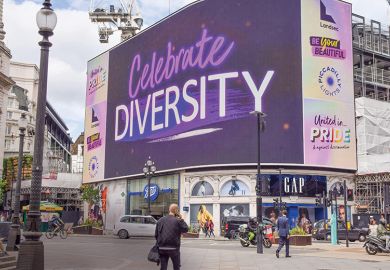James Jasper is an American sociologist, the author of Nuclear Politics and co- author (with Dorothy Nelkin) of The Animal Rights Crusade. In The Art of Moral Protest he draws on his earlier work to present a more general view of morally based protest movements.
Readers of this review need to know that I approach the book as a protester, especially but not exclusively for nonhuman animals. I picked up The Art of Moral Protest in the hope that the more detached perspective of a social scientist would add to the knowledge that I have gained from my own experiences. I thought the book might tell me something about what sparks protests, who takes part in them, why some groups are cohesive and others not, and, most importantly of all, what makes some protests effective and others futile.
The Art of Moral Protest makes an inauspicious start because Jasper first embraces cultural relativism and then makes judgements incompatible with it. He tells us that "As the 'postmodernists' insist, we have no universal absolute Truth on which we can construct our beliefs...We have only our own cultural traditions, and the traditions of others." Four pages later, Jasper tells us that "we can censure movements that aim at denying cultural voice and creativity to others, for this is a hideous form of oppression. The Nazis, the Khmer Rouge, and the Taliban of Afghanistan not only aimed at destroying certain cultures, but prevented many people from creating their own culture." The reader has to wonder whether Jasper's emphatic negative judgement about these movements is supposed to be an absolute Truth, or merely a belief constructed from someone's cultural tradition? If the latter, why should we pay them any more regard than beliefs constructed from the cultural traditions of one of the three movements named?
This kind of sloppy thinking is, regrettably, so often encountered in current work in the social sciences and cultural studies that it may seem petty even to draw attention to it. It is, however, alarming to find, at the outset of a book about moral protest, evidence that the author has not really thought through his ideas about the nature of morality.
After the introductory chapter, part one is hard going for anyone who is not particularly interested in the various schools of sociologists who have looked at protest movements. Four different approaches are described: Crowd Theory, Rationalists, the Mobilisation paradigm and the Political Process approach. Jasper believes that the proponents of each approach try to make their basic concept do too much. He suggests adding a cultural dimension, and asserts that culture is a fundamental component of the construction of other dimensions, as well as "being its own set of variables". All this seems plausible enough, but Jasper's account of culture is so broad that it is not always clear what he really thinks the cultural dimension adds, beyond what anyone using a modicum of commonsense would already know. His conclusions are often trite. For example, at the end of chapter three we are told that: "Culture is dual, combining structured, public systems of symbols with more open-ended, individual meanings." And after chapter four:
"Cultures are situated in concrete times, places and institutional arrangements."
After this it is a relief to find part two beginning with a biographical sketch of an influential figure in the opposition to the building of the Diablo Canyon nuclear power plant. Jasper then moves outward to discuss the role played by emotions in this and other protest movements. Here he touches on important issues, such as the tendency of protest movements to generate "villains", to attribute corrupt motives to opponents, and to exaggerate their power or influence. Those involved in protest movements will, if they are honest with themselves, recognise this tendency. While painting "the enemy" in an entirely negative light may help to boost morale within the movement, it often means that the movement loses touch with reality and misses opportunities to communicate with those who are in a position to make a difference. In the animal movement, for instance, Henry Spira has been uniquely effective in eliminating or reducing the abuse of animals precisely because, instead of demonising research scientists at corporations like Revlon, Avon and Procter and Gamble, he has assumed that they are ordinary people who will be prepared to reduce animal suffering if they can find a way of doing it without causing serious damage to the interests of the organisation for which they work. Using the animal movement and the protests against nuclear energy as his central examples, Jasper describes the emotions, moral visions and beliefs about the world that are the building blocks of protest movements. The strengths of parts two and three are in the specifics, the accounts of different protest activities, the biographies of individuals involved, the comments quoted from interviews, and the findings of surveys of protesters.
Part four includes a chapter on "Culture and strategy", but it is too brief and superficial to be of much help to activists pondering strategies for success. Jasper refers to military strategists like Clausewitz and Basil Liddell Hart, and points out that some of their maxims do have application in the arena of moral protest. He also describes two campaigns against specific animal experiments, one successful and the other not, and attributes the failure of the second campaign at least in part to the more proactive PR campaign waged by the institution under attack. But this account is short on historical context. Jasper describes the success of the first campaign, against drug addiction experiments at Cornell Medical School, as "the most prominent scientific experiment (and one of the only ones) stopped by the animal rights movement". This overlooks Spira's first campaign, against experiments at the American Museum of Natural History involving the mutilation of cats for sex research, which set the model for many later campaigns, including the one against Cornell Medical School. In any case, it is impossible to say much about what makes a campaign work without a wide range of examples and much more than half a dozen pages on each example. Once again the chapter finishes with trite conclusions such as: "Strategy, although partly independent of culture, biography, and resources, is closely affected by them."
In the final section of the book, headed "A normative view," Jasper gives his own assessment of protest movements. He notes that some protest movements do achieve at least part of their goals. The animal movement, for example, has persuaded corporations to fund research into alternatives to animal testing, and this has meant that millions of animals have been saved from painful product testing (although millions more continue to be used, even on products that meet no real human need, where alternatives have yet to be found or accepted as valid). Nevertheless Jasper ultimately values protesters "as a source of vision and voice", rather than for what they achieve. They are more like poets, he says, than engineers. That is a defensible view, but it is not mine. If I thought that the animal rights movement has not, and never would bring about any reduction in the amount of pain and suffering inflicted on animals, I would think it all a colossal waste of time.
Peter Singer is professor, Centre for Human Bioethics, Monash University, Australia.
The Art of Moral Protest
Author - James Jasper
ISBN - 0 226 39480 8
Publisher - University of Chicago Press
Price - £.95
Pages - 514
Register to continue
Why register?
- Registration is free and only takes a moment
- Once registered, you can read 3 articles a month
- Sign up for our newsletter
Subscribe
Or subscribe for unlimited access to:
- Unlimited access to news, views, insights & reviews
- Digital editions
- Digital access to THE’s university and college rankings analysis
Already registered or a current subscriber?



